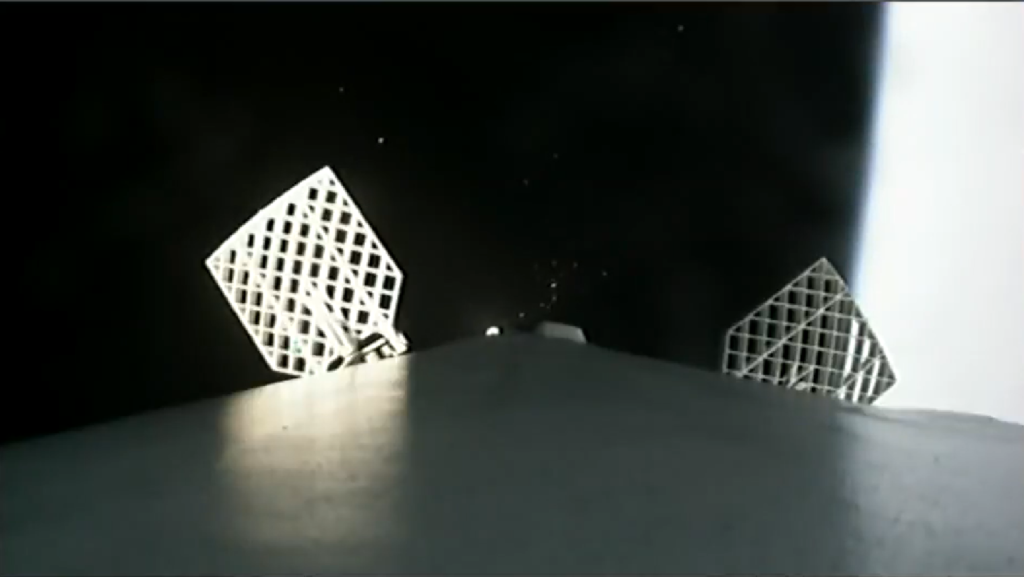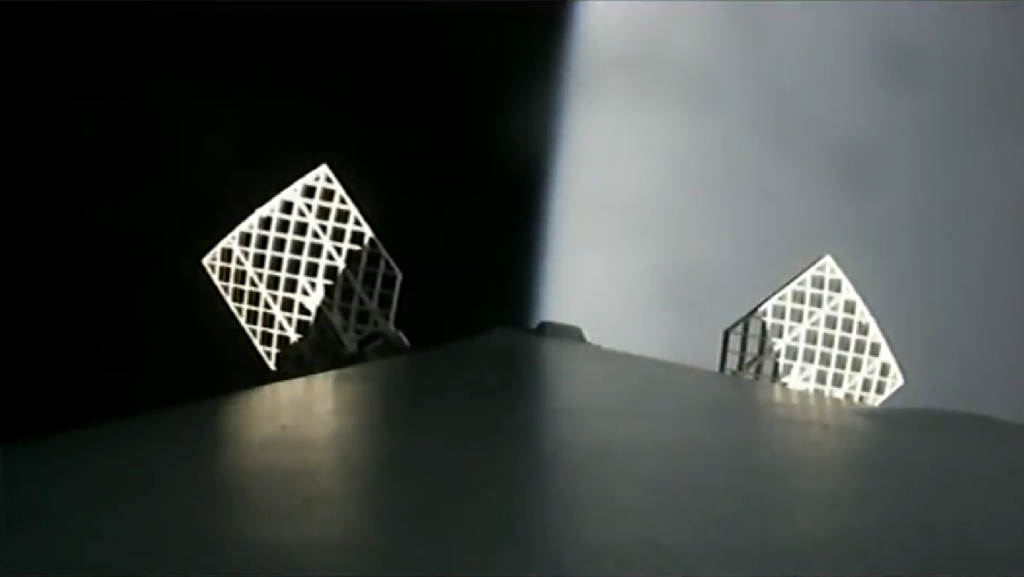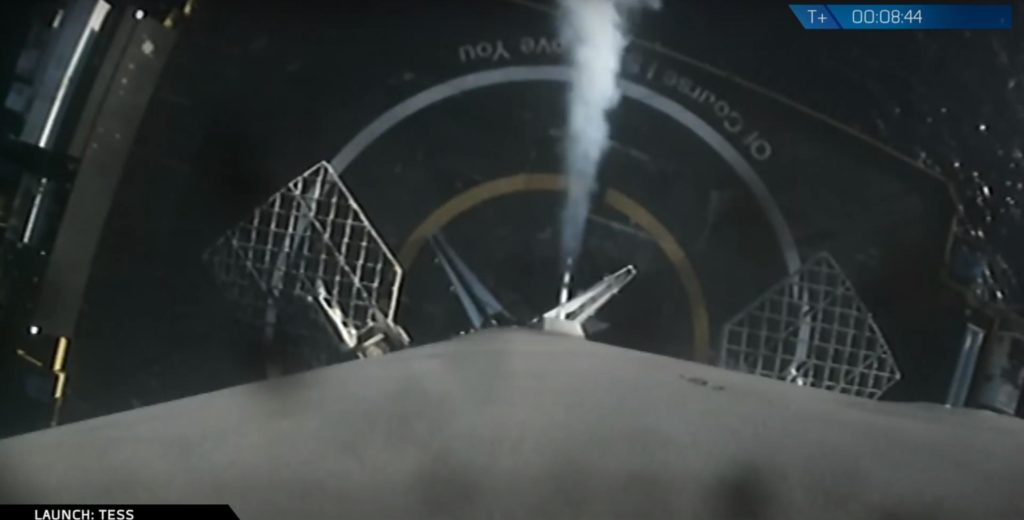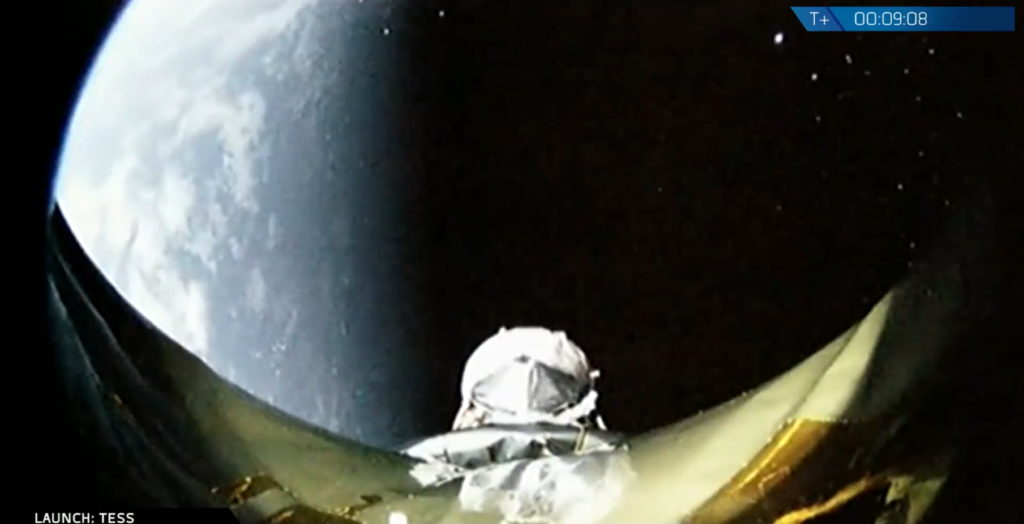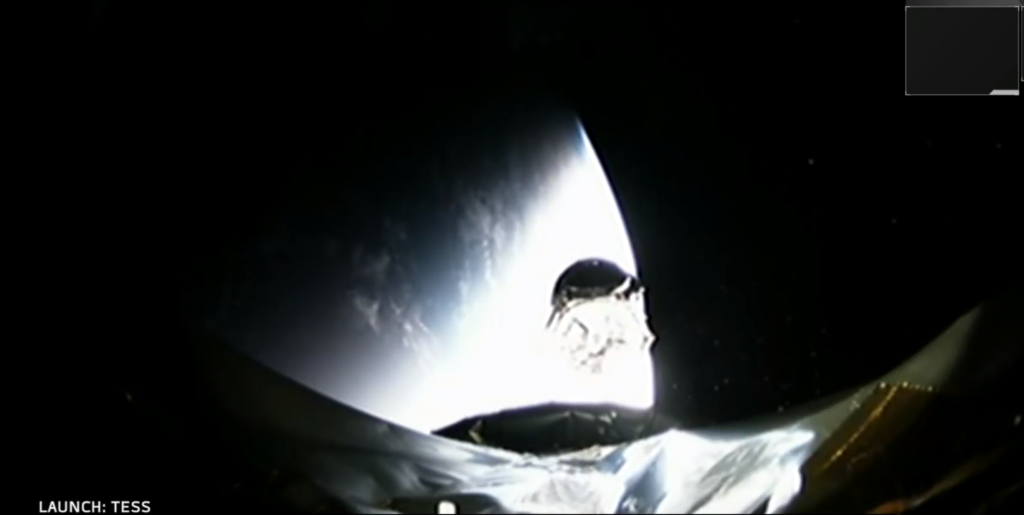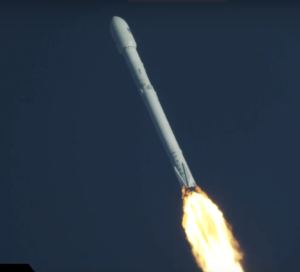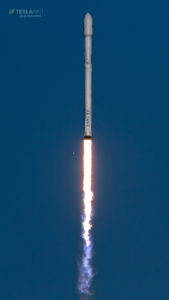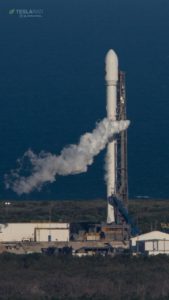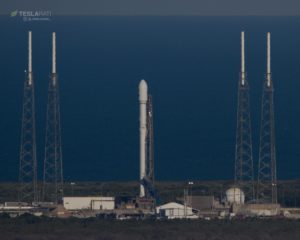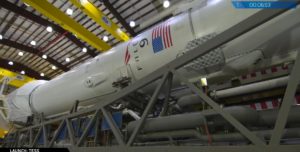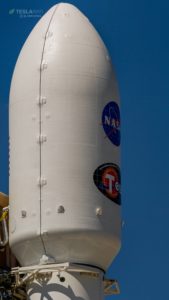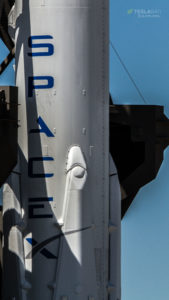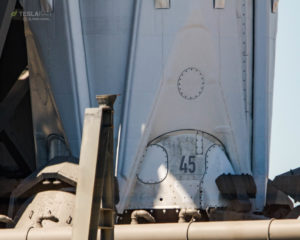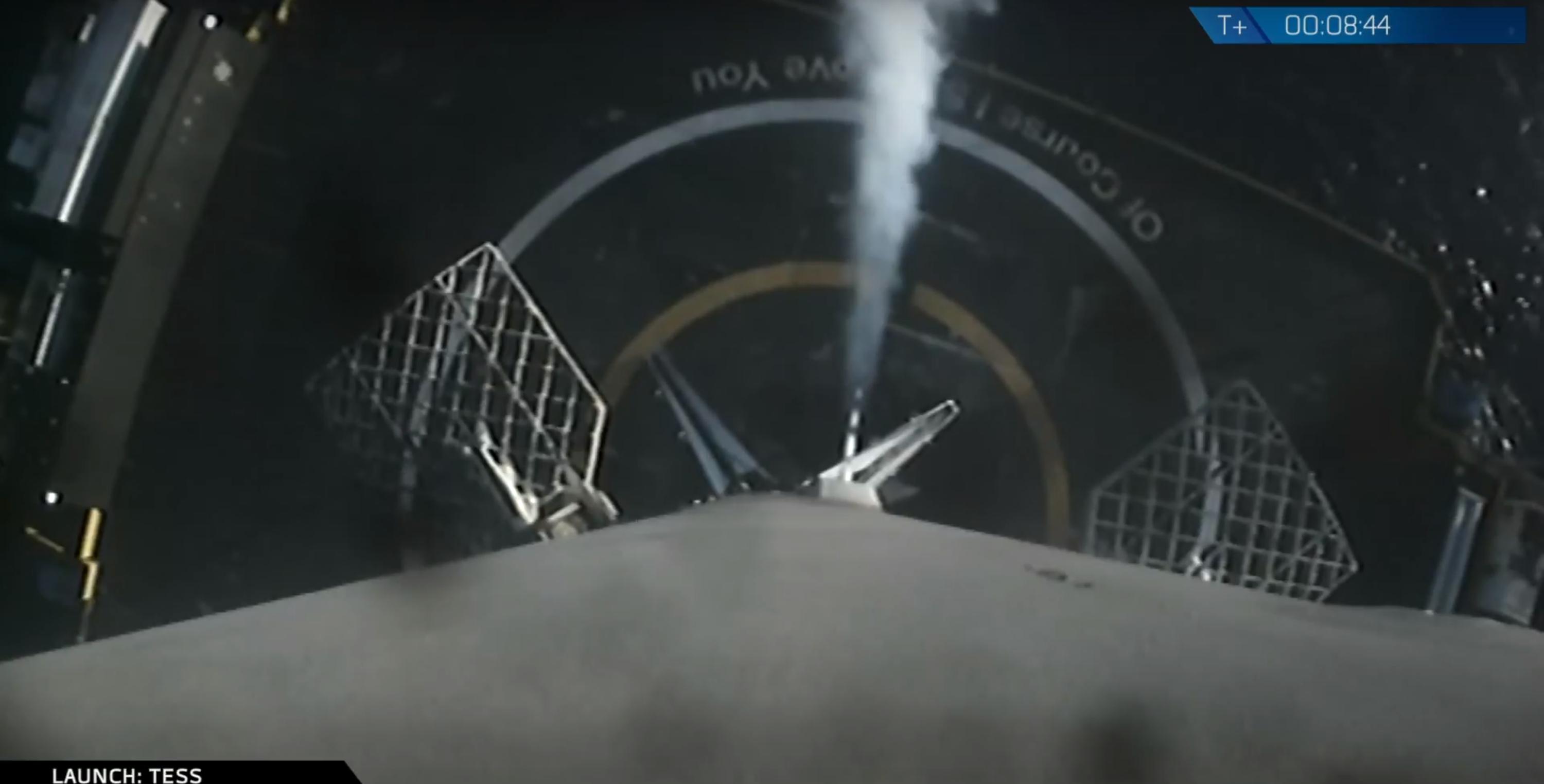

News
SpaceX nails first rocket landing by sea in half a year, sends exoplanet probe beyond the Moon
SpaceX has successfully completed the first drone ship recovery of a Falcon 9 booster in nearly six months, bringing to an end a what will likely be the final drought of by-sea rocket landings in the company’s history.
B1045’s landing was a particularly stunning example of just how far SpaceX has come. By all appearances, the recovery was easily the smoothest yet achieved by the company, with nary a hint of reentry heating visible in the near-flawless live coverage from a camera aboard the booster. Perhaps of even more interest, the landing itself appeared to be exceptionally luxurious, with the booster gently floating down to its final resting perch aboard the drone ship Of Course I Still Love You.
This return-to-landing, so to speak, is SpaceX’s 24th successful Falcon booster recovery in just over three years of true recovery efforts. The last several months have featured an unfamiliar number of intentionally expendable launches, in which SpaceX chose to preclude any attempt at recovery, instead typically gently landing the boosters in the ocean to gather additional flight-test data and to explore the envelope of Falcon 9’s recovery capabilities. In all cases but one (Hispasat 30W-6), these intentionally expended boosters were older, flight-proven versions of the rocket, versions that hadn’t been designed to economically fly more than once or twice.
B1045, however, has just one flight under its belt, and is already pegged for a second launch with CRS-15, giving the booster as few as 50 days to be refurbished and prepped for its second pre-launch static fire (likely the first week of June). This would be an exceptionally fitting case of foreshadowing for SpaceX’s upcoming Block 5 iteration of Falcon 9. If a Block 4 booster can be launched, landed, and refurbished in well under two months, one can only imagine what a Falcon 9 explicitly upgraded for ease of reuse will be capable of.
- Although SpaceX has nail multiple LZ-1 recoveries over the last six months, TESS is the first mission to feature a successful drone ship land since October 30 2017. (SpaceX)
- B1045 soars towards OCISLY, stationed 300 km East of the Florida coast. (SpaceX)
- Falcon 9 B1045’s picture-perfect, gentle landing aboard drone ship OCISLY, April 2018. (SpaceX)
Over the past six months, SpaceX has aggressively expanded their program of orbital rocket reuse, leaping from just three operational reflights of Falcon 9 boosters in the process’ first half-year (Mar-Oct ’17) to seven operational reflights between the following months of December and April. Today, April 18, the successful launch of NASA’s Transiting Exoplanet Survey Satellite (TESS) marks the final launch of a new Block 4 Falcon 9 booster (B1045) – although we can expect as many as three additional reflights of recovery Block 4 boosters in 2018, all new Falcon 9 boosters from here on out will be Block 5s, a final upgrade to the rocket designed to significantly optimize reliability and reusability. The first Falcon 9 Block 5 is expected to debut sometime in May, currently No Earlier Than (NET) May 4.
Impressively, despite the fairly extensive modifications and upgrades – both for reliability and reusability – included in Falcon 9 Block 5, SpaceX’s Hans Koenigsmann stated that the lengthy test campaign in Texas went well and was in fact “faster than we’ve ever had on new Block upgrades [of Falcon 9].” SpaceX themselves have not yet given a specific date for the debut of Block 5, but Hans did partially confirm recent reports that it is now targeting a debut in “early May” with the launch of Bangabandhu-1. Put simply, so long as things go more or less according to plan, 2018 will in every conceivable way usher in the real future of orbital-class reusable rockets – perhaps enabling the sort of responsive, cheap, and reliable access to space long ago promised by CEO Elon Musk.
Koenigsmann: This TESS booster is planned to fly again on the next CRS mission pending NASA approval. #SpaceX
— Michael Baylor (@MichaelBaylor_) April 15, 2018
Science galore
TESS will dramatically increase the number of known exoplanets. It will more than double the number found by Kepler. #NASA #TESS #SpaceX #Falcon9
— Chris G (@ChrisG_SpX) April 15, 2018
Despite its diminutive size and 350 kg mass, TESS is expected to dramatically expand the number of detected exoplanets in the universe, and is tasked with surveying the remaining 95% of the sky left unscanned after Kepler’s famous mission. Ultimately, conservative estimates from astronomers expect TESS to add thousands of new exoplanets to humanity’s current catalog, with perhaps as many as 10% of those discovered likely to be Earth-sized, and thus potential candidates for the first habitable planets to be observed beyond the cozy bounds of our own Solar System.
To give a sense of just how far electronics and satellite technology have improved in the decade since the Kepler observatory was launched (2009), that 1050kg spacecraft was designed to stare specifically at one small segment of the sky (0.25%), scanning it ceaselessly for exoplanets. Despite complex technical difficulties, Kepler managed to discover nearly 1100 confirmed exoplanets, with more than 3000 additional candidates waiting to be confirmed by other spacecraft or telescopes.
- A Falcon 9 fairing during encapsulation, when a launch payload is sealed inside the fairing’s two halves. This small satellite is NASA’s TESS, launched in April 2018. (NASA)
- Smol TESS seen attached to SpaceX’s Falcon 9 second stage. (SpaceX)
- Teeny, tiny TESS separates from Falcon 9’s second stage and begins its journey beyond the Moon, ahead of a productive life of science. (SpaceX)
On the other hand, the 350kg TESS, has been designed to sca the entire sky and may well double, triple, or quadruple the number of known exoplanets in the universe. Falcon 9 may undoubtedly be a bit like using a dump truck when a shovel would do, but the tiny size of the payload can be thanked for the exceptionally gentle booster recovery and the equally (relatively) easy refurbishment soon to follow.
- (SpaceX)
- (Tom Cross)
- (Tom Cross)
- (Tom Cross)
- Falcon 9 B1045 prepares for its first launch in mid-April. (SpaceX)
- SpaceX engineers and technicians have begun an aggressive campaign hoping to recover and reuse fairings ASAP. (Tom Cross)
- Falcon 9 B1045 before its first launch, carrying NASA’s TESS exoplanet observatory, in April 2018. (Tom Cross)
Follow us for live updates, behind-the-scenes sneak peeks, and a sea of beautiful photos from our East and West coast photographers.
Teslarati – Instagram – Twitter
Tom Cross – Twitter
Pauline Acalin – Twitter
Eric Ralph – Twitter
Elon Musk
Tesla reveals it is using AI to make factories more sustainable: here’s how
Tesla is using AI in its Gigafactory Nevada factory to improve HVAC efficiency.

Tesla has revealed in its Extended Impact Report for 2024 that it is using Artificial Intelligence (AI) to enable its factories to be more sustainable. One example it used was its achievement of managing “the majority of the HVAC infrastructure at Gigafactory Nevada is now AI-controlled” last year.
In a commitment to becoming more efficient and making its production as eco-friendly as possible, Tesla has been working for years to find solutions to reduce energy consumption in its factories.
For example, in 2023, Tesla implemented optimization controls in the plastics and paint shops located at Gigafactory Texas, which increased the efficiency of natural gas consumption. Tesla plans to phase out natural gas use across its factories eventually, but for now, it prioritizes work to reduce emissions from that energy source specifically.
It also uses Hygrometric Control Logic for Air Handling Units at Giafactory Berlin, resulting in 17,000 MWh in energy savings each year. At Gigafactory Nevada, Tesla saves 9.5 GWh of energy through the use of N-Methylpyrrolidone refineries when extracting critical raw material.
Perhaps the most interesting way Tesla is conserving energy is through the use of AI at Gigafactory Nevada, as it describes its use of AI to reduce energy demand:
“In 2023, AI Control for HVAC was expanded from Nevada and Texas to now include our Berlin-Brandenburg and Fremont factories. AI Control policy enables HVAC systems within each factory to work together to process sensor data, model factory dynamics, and apply control actions that safely minimize the energy required to support production. In 2024, this system achieved two milestones: the majority of HVAC infrastructure at Gigafactory Nevada is now AI-controlled, reducing fan and thermal energy demand; and the AI algorithm was extended to manage entire chiller plants, creating a closed-loop control system that optimizes both chilled water consumption and the energy required for its generation, all while maintaining factory conditions.”
Tesla utilizes AI Control “primarily on systems that heat or cool critical factory production spaces and equipment.” AI Control communicates with the preexisting standard control logic of each system, and any issues can be resolved by quickly reverting back to standard control. There were none in 2024.
Tesla says that it is utilizing AI to drive impact at its factories, and it has proven to be a valuable tool in reducing energy consumption at one of its facilities.
Elon Musk
Tesla analysts believe Musk and Trump feud will pass
Tesla CEO Elon Musk and U.S. President Donald Trump’s feud shall pass, several bulls say.

Tesla analysts are breaking down the current feud between CEO Elon Musk and U.S. President Donald Trump, as the two continue to disagree on the “Big Beautiful Bill” and its impact on the country’s national debt.
Musk, who headed the Department of Government Efficiency (DOGE) under the Trump Administration, left his post in May. Soon thereafter, he and President Trump entered a very public and verbal disagreement, where things turned sour. They reconciled to an extent, and things seemed to be in the past.
However, the second disagreement between the two started on Monday, as Musk continued to push back on the “Big Beautiful Bill” that the Trump administration is attempting to sign into law. It would, by Musk’s estimation, increase spending and reverse the work DOGE did to trim the deficit.
Every member of Congress who campaigned on reducing government spending and then immediately voted for the biggest debt increase in history should hang their head in shame!
And they will lose their primary next year if it is the last thing I do on this Earth.
— Elon Musk (@elonmusk) June 30, 2025
President Trump has hinted that DOGE could be “the monster” that “eats Elon,” threatening to end the subsidies that SpaceX and Tesla receive. Musk has not been opposed to ending government subsidies for companies, including his own, as long as they are all abolished.
How Tesla could benefit from the ‘Big Beautiful Bill’ that axes EV subsidies
Despite this contentious back-and-forth between the two, analysts are sharing their opinions now, and a few of the more bullish Tesla observers are convinced that this feud will pass, Trump and Musk will resolve their differences as they have before, and things will return to normal.
ARK Invest’s Cathie Wood said this morning that the feud between Musk and Trump is another example of “this too shall pass:”
BREAKING: CATHIE WOOD SAYS — ELON AND TRUMP FEUD “WILL PASS” 👀 $TSLA
She remains bullish ! pic.twitter.com/w5rW2gfCkx
— TheSonOfWalkley (@TheSonOfWalkley) July 1, 2025
Additionally, Wedbush’s Dan Ives, in a note to investors this morning, said that the situation “will settle:”
“We believe this situation will settle and at the end of the day Musk needs Trump and Trump needs Musk given the AI Arms Race going on between the US and China. The jabs between Musk and Trump will continue as the Budget rolls through Congress but Tesla investors want Musk to focus on driving Tesla and stop this political angle…which has turned into a life of its own in a roller coaster ride since the November elections.”
Tesla shares are down about 5 percent at 3:10 p.m. on the East Coast.
Elon Musk
Tesla scrambles after Musk sidekick exit, CEO takes over sales
Tesla CEO Elon Musk is reportedly overseeing sales in North America and Europe, Bloomberg reports.

Tesla scrambled its executives around following the exit of CEO Elon Musk’s sidekick last week, Omead Afshar. Afshar was relieved of his duties as Head of Sales for both North America and Europe.
Bloomberg is reporting that Musk is now overseeing both regions for sales, according to sources familiar with the matter. Afshar left the company last week, likely due to slow sales in both markets, ending a seven-year term with the electric automaker.
Tesla’s Omead Afshar, known as Elon Musk’s right-hand man, leaves company: reports
Afshar was promoted to the role late last year as Musk was becoming more involved in the road to the White House with President Donald Trump.
Afshar, whose LinkedIn account stated he was working within the “Office of the CEO,” was known as Musk’s right-hand man for years.
Additionally, Tom Zhu, currently the Senior Vice President of Automotive at Tesla, will oversee sales in Asia, according to the report.
It is a scramble by Tesla to get the company’s proven executives over the pain points the automaker has found halfway through the year. Sales are looking to be close to the 1.8 million vehicles the company delivered in both of the past two years.
Tesla is pivoting to pay more attention to the struggling automotive sales that it has felt over the past six months. Although it is still performing well and is the best-selling EV maker by a long way, it is struggling to find growth despite redesigning its vehicles and launching new tech and improvements within them.
The company is also looking to focus more on its deployment of autonomous tech, especially as it recently launched its Robotaxi platform in Austin just over a week ago.
However, while this is the long-term catalyst for Tesla, sales still need some work, and it appears the company’s strategy is to put its biggest guns on its biggest problems.
-

 Elon Musk1 day ago
Elon Musk1 day agoTesla investors will be shocked by Jim Cramer’s latest assessment
-

 News6 days ago
News6 days agoTesla Robotaxi’s biggest challenge seems to be this one thing
-

 News2 weeks ago
News2 weeks agoTesla’s Grok integration will be more realistic with this cool feature
-

 Elon Musk2 weeks ago
Elon Musk2 weeks agoElon Musk slams Bloomberg’s shocking xAI cash burn claims
-

 News2 weeks ago
News2 weeks agoTesla China roars back with highest vehicle registrations this Q2 so far
-

 News2 weeks ago
News2 weeks agoTesla dominates Cars.com’s Made in America Index with clean sweep
-

 News2 weeks ago
News2 weeks agoTexas lawmakers urge Tesla to delay Austin robotaxi launch to September
-

 Elon Musk1 week ago
Elon Musk1 week agoFirst Look at Tesla’s Robotaxi App: features, design, and more


